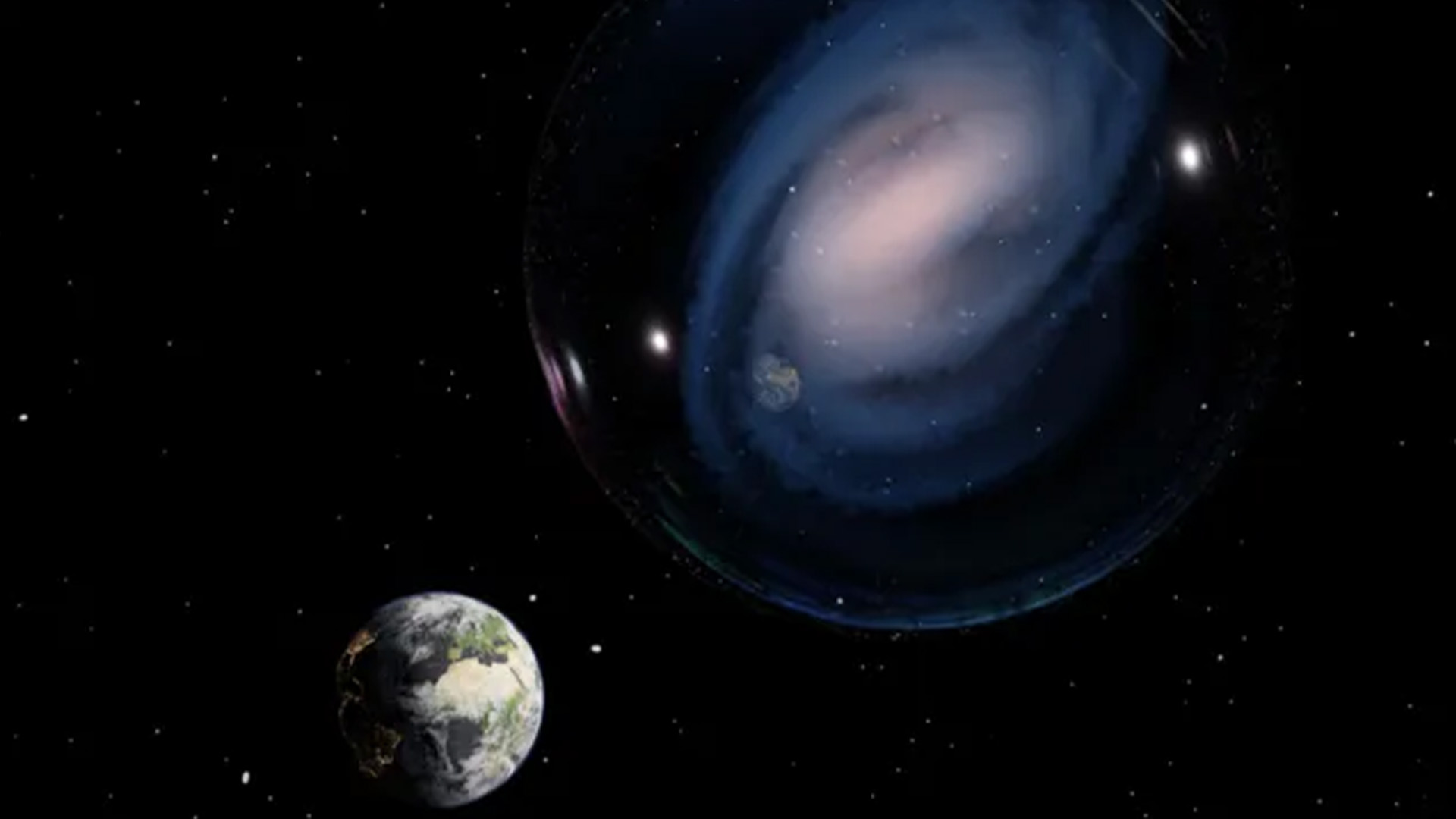James Webb telescope uncovers mysterious Milky Way 'twin' in the early universe
A Milky Way doppleganger discovered in the early universe suggests some key physical ingredient is missing from cosmological models.

Astronomers have discovered the most distant example of a galaxy in the universe that looks like our home galaxy, the Milky Way.
When the universe was just two billion years old, the newfound spiral galaxy, ceers-2112, appears to have featured a bar of stars and gas cutting across its heart, like a slash across a no-smoking sign. The Milky Way, also a spiral galaxy, sports a similar bar. Scientists suspect the Milky Way's bar rotates cylindrically, like a toilet roll holder does as you unravel toilet paper, funneling gas into the galaxy's center and sparking bursts of star formation.
Astronomers previously thought this galactic structure marks the end of a galaxy's formative years, so it was expected to be seen only in old galaxies that may have reached full maturity — perhaps those that existed halfway through the evolution of the universe. Indeed, the Hubble Space Telescope's past observations of galaxy morphologies have shown the early universe hosted very few barred galaxies.
However, the new findings, gleaned from data by the James Webb Space Telescope (JWST), conclude it may not be necessarily true that barred spirals must've roamed the universe for so long. The discovery of spiral galaxy ceers-2112 reveals galaxies that resemble our own already existed 11.7 billion years ago, "when the universe had just 15 percent of its life," Luca Costantin, an astrophysicist at the Centro de Astrobiología in Madrid and the lead author of the new study, told Space.com.
The JWST can collect six times more light than Hubble, allowing for more detailed features of faraway galaxies to come into view. Ceers-2112 is observed at a redshift of 3, when the universe was 2,100 million years old. Essentially, this means the light from the galaxy took 11.7 billion years to reach the JWST, Costantin said. This is a surprising find, as the galactic bars are seen in roughly two-thirds of all spiral galaxies, but bars are thought to have manifested about 4 billion years into the birth of the universe.
Studying detailed morphologies of faraway galaxies "is essential to understand their history, opening the door to new scenarios about galaxy formation and evolution," study co-author Cristina Cabello, who is a researcher at the Instituto de Física de Partículas y del Cosmos in Madrid, said in a statement.
The presence of the bar in ceers-2112, for instance, challenges current theoretical models that predict the early universe's physical conditions must have prevented the formation of barred galaxies in general, Costantin said.
Get the world’s most fascinating discoveries delivered straight to your inbox.
"Theoretical predictions from cosmological simulations really struggle to reproduce such systems at those epochs," he told Space.com. "We now need to understand which key physical ingredient is missing in our models — if something is missing."
Further, studies like these are also shaping our understanding of the role dark matter played in the early universe.
Astronomers think 85 percent of all matter in the universe is dark matter, a mysterious substance elusive to telescopic observations because it doesn't interact with light at all. Dark matter is thought to have radically influenced galaxy evolution and star formation from as early as 380,000 years after the Big Bang. Findings from the new study, however, show galaxy evolution, at least in the case of ceers-2112, was dominated by ordinary matter and not dark matter when the universe was about two billion years old. The galaxy's morphology shows that the contribution of dark matter in the galactic bar of ceers-2112 is very low and is instead dominated by normal matter, the study finds.
"This discovery confirms that the evolution of this galaxy was dominated by baryons — the ordinary matter we are made of — and not by dark matter, despite its over-abundance, when the universe had only 15% of its actual age," said study co-author Jairo Abreu, who is a researcher at University of La Laguna.
"JWST, in just one year of observations, is revolutionizing our understanding of the early universe," said Costantin. "In the next 5 to 10 years, I personally plan to continue exploiting its extraordinary capabilities, investigating the detailed structure of the first galaxies assembled in the universe."
This research is described in a paper published Wednesday (Nov. 8) in the journal Nature.
Originally posted on Space.com.

Sharmila Kuthunur is an independent space journalist based in Bengaluru, India. Her work has also appeared in Scientific American, Science, Astronomy and Space.com, among other publications. She holds a master's degree in journalism from Northeastern University in Boston. Follow her on BlueSky @skuthunur.bsky.social


